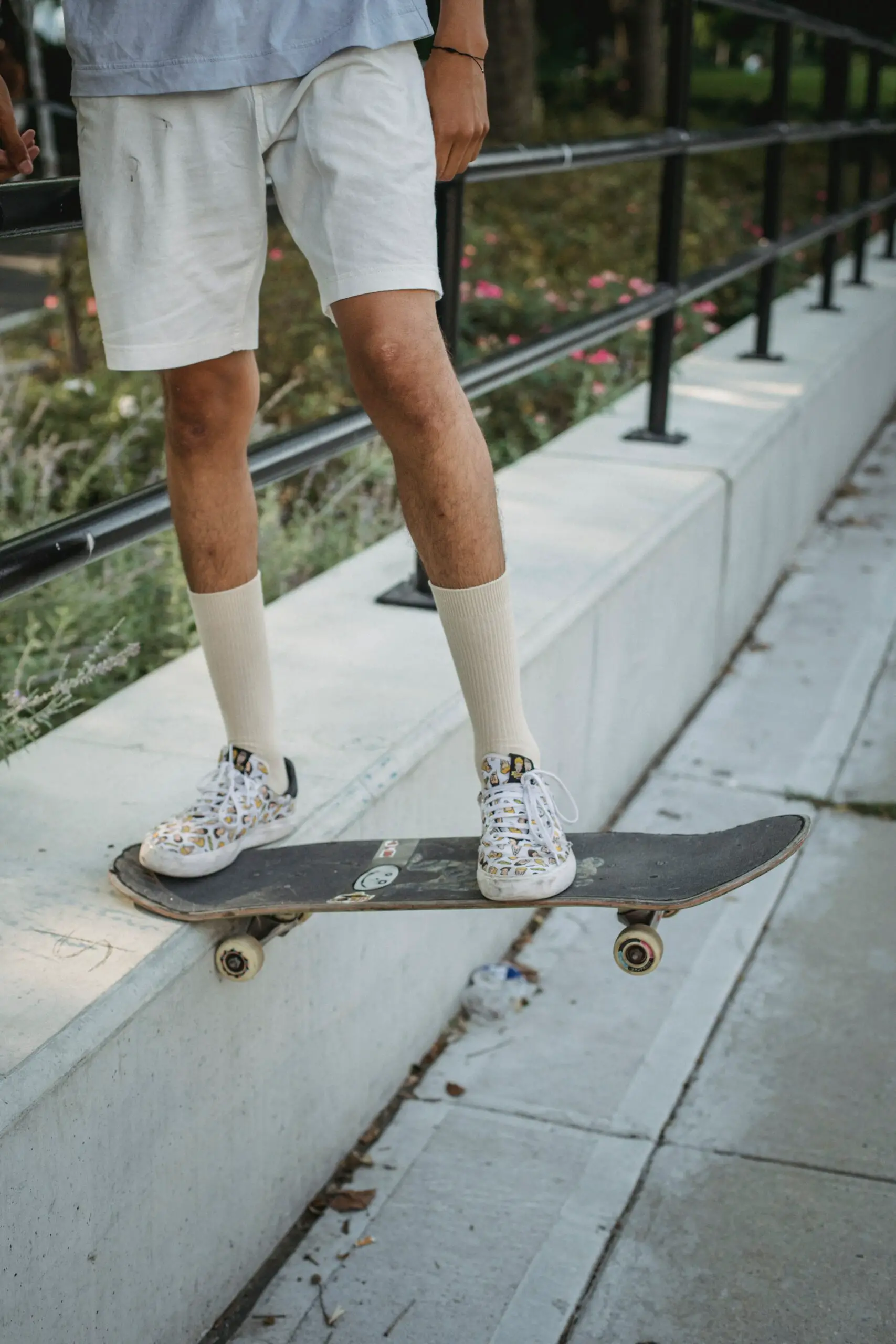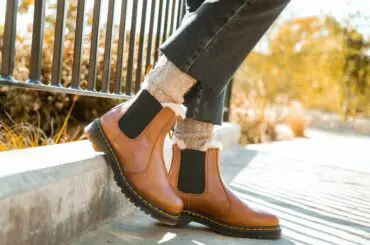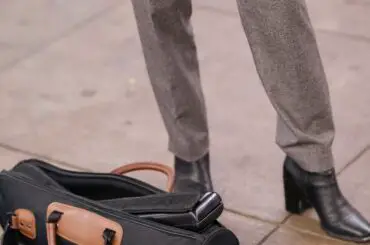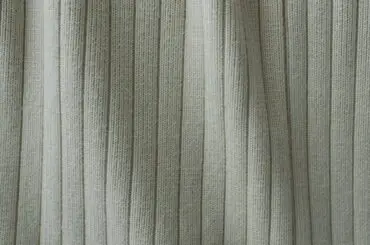Contents
Why Does the Tongue of My Shoe Slide?
Imagine this: you’re gearing up for your daily run, ready to hit the pavement and break a sweat. You lace up your favorite running shoes, tighten the laces just right, and start your jog. But wait, what’s this? The tongue of your shoe is on a mission of its own, sliding to the side as you take each stride.

It’s almost like your shoe is playing a game of hide and seek with your foot. Frustrating, right? Well, fear not! In this article, we’re delving deep into the world of shoe tongues, exploring why they misbehave, and discovering how you can put them back in their place, so you can run, walk, or dance with ease.
Anatomy of a Shoe: The Unsung Hero
Before we dive headfirst into the enigma of wandering shoe tongues, let’s take a moment to understand what they are and why they’re so essential. Think of a shoe as a complex machine, with various parts working together to provide comfort and support. The tongue of your shoe plays a vital role in this ensemble.
The Shoe Ensemble: Your shoe isn’t just a sole and some fabric; it’s a carefully crafted masterpiece comprising the outsole (the bottom part that touches the ground), midsole (the cushy layer), insole (where your foot rests), and the upper (the part that wraps around your foot). But today, our spotlight is on the tongue.
Role of the Shoe Tongue: The tongue is that padded bit that sits on top of your foot, just beneath the laces. Its job is simple yet crucial – to protect your foot from the pressure of the laces and to keep your foot snug and comfy inside the shoe. It’s like a cushioned bridge connecting your foot to the laces, ensuring a cozy fit.
Factors Contributing to Tongue Slippage
Now that we’ve unveiled the tongue’s role let’s get to the heart of the matter: why does this seemingly innocent part of your shoe decide to slide sideways, causing you discomfort? Well, there’s more to it than meets the eye, and it’s not just your shoe trying to mess with you.
1. Shoe Design Shenanigans
Low vs. High Tongue Design: Shoes come in various designs, and the height of the tongue can impact how it behaves. Some shoes have tongues that sit low, barely peeking out, while others have tongues that rise high like enthusiastic waves. Low-tongued shoes might require some extra attention to keep things snug.
For example, if you’re into skateboarding, you might have noticed that skate shoes often have low tongues. This design choice gives you more control over your board but can lead to tongue slippage if not laced up properly.
Material Matters: Another culprit in the tongue-slippage mystery is the material used for the tongue itself. Slippery materials or tongues that have seen better days are more likely to misbehave. It’s akin to trying to walk on an icy sidewalk with your fanciest socks – not the safest idea!
For instance, basketball shoes often feature tongues made of synthetic leather or mesh to improve breathability. While this is great for ventilation during intense games, it can also make the tongue more prone to sliding if not paired with the right lacing technique.
2. Foot Funkiness
Arch Types: Your foot’s arch type is another piece of the puzzle when it comes to tongue slippage. If you have flat feet, you might be more susceptible to this issue because your feet have less natural curve to help keep the tongue centered.
Consider Sarah, who loves hiking. She has flat feet and noticed that her hiking boots‘ tongues tended to slide, causing discomfort during long treks. She started using specialized insoles designed for flat arches, and voilà – the tongue stayed put, and her hikes became more enjoyable.
Foot Shape: Just as no two snowflakes are identical, no two feet are the same either. Some feet are narrow, some are wide, and some fall in between. The shape of your foot can also affect how the tongue behaves.
Imagine Alex, who has wide feet and enjoys playing tennis. He used to struggle with tongue slippage in his tennis shoes. Then, he discovered a brand that offers wider shoe options. Now, his shoes fit better, and the tongue stays in place during intense matches.
3. Activities and Shoe Shenanigans
Running Ruckus: The type of activity you’re engaged in plays a significant role in tongue slippage. When you’re running, for example, your shoes endure a lot of movement, which can cause the tongue to shift around more, especially if your shoes are a bit loose.
Meet Mark, an avid runner who experienced tongue slippage during his daily jogs. He experimented with different lacing techniques and found that the “window lacing” method provided the stability he needed. Now, he breezes through his runs without a hitch.
Lacing Game: Speaking of lacing, how you lace your shoes matters too. If your laces are too tight, they can push the tongue to the side. On the other hand, if they’re too loose, the tongue has room to roam.
Let’s say you’re a dancer like Lisa. You wear ballet flats that need to be snug but not too tight. She discovered that the crisscross lacing technique worked wonders for keeping the tongue in place during her performances.
Common Problems Associated with Tongue Slippage
Now that we’ve uncovered the reasons behind this tongue-twisting issue, let’s talk about the real-world problems it can cause.
1. Discomfort and Irritation
When the tongue of your shoe decides to go rogue, it can lead to discomfort and even irritation. It’s akin to having a tiny pebble in your shoe – a constant annoyance that can quickly turn a pleasant walk into a bothersome ordeal.
Take Mike, for instance, who enjoys leisurely strolls with his dog. His sneakers often experienced tongue slippage, causing irritation during his walks. This annoyance prompted him to explore solutions to ensure his walks remained enjoyable.
2. Reduced Shoe Performance
Misaligned tongues don’t just cause discomfort; they can also affect your shoe’s performance. Your shoe might not provide the support and stability you need, making your activities less enjoyable and potentially riskier.
Consider Maria, a dedicated hiker who ventured into the mountains every weekend. Tongue slippage in her hiking boots led to an unstable footing, making her hikes less enjoyable and safe. She knew she needed a remedy to continue her adventures with confidence.
3. Potential for Injuries
An ill-behaved tongue could lead to injuries like blisters, sores, or even more serious issues like ankle sprains. It’s like inviting an uninvited guest to a party – they always cause trouble.
Meet Tom, a passionate basketball player. During an intense game, his shoe’s tongue slid, causing discomfort and distraction. One unfortunate misstep due to the discomfort led to a minor ankle sprain. This injury was an eye-opener for Tom, prompting him to find a solution to prevent such incidents in the future.
4. Impact on Foot Health
Long-term tongue slippage can also impact your foot health. It can lead to uneven pressure on your feet, potentially causing issues down the road. Foot problems can affect your overall well-being, so it’s crucial to address them promptly.
Samantha, a nurse who spends long hours on her feet, noticed that her work shoes often suffered from tongue slippage. Over time, she developed foot pain and discomfort, affecting her job performance and overall quality of life. Samantha realized she needed to find a solution to maintain her foot health and comfort.
Solutions and Remedies: Taming the Tongue
Alright, you’re probably thinking, “Enough about the problems; how do I put that rebellious tongue back in its place?” We’ve got you covered. Here are some practical solutions and remedies to help you regain control over your shoe tongue:
1. Shoe-Specific Fixes
Lacing Techniques: Experiment with different lacing techniques to keep the tongue centered. For instance, the “window lacing” method involves creating small loops with the laces near the tongue, effectively securing it in place.
Tongue Tabs and Loops: Some shoe designs come with handy tongue tabs or loops. Use these to your advantage. They’re designed to hold the tongue in place and prevent it from shifting during activities.
Tongue Stay Devices: If your shoe doesn’t have built-in solutions, consider investing in tongue stay devices. These nifty gadgets can be attached to your shoes to ensure the tongue remains where it should.
For Sarah, the hiker, the “window lacing” technique proved to be a game-changer. It kept the tongue of her hiking boots perfectly aligned during her outdoor adventures.
2. Footwear Accessories
Tongue Pads: Tongue pads are small inserts that you can place under the tongue of your shoe. They act as cushions, reducing the chances of tongue slippage and providing additional comfort.
Insoles: Sometimes, adding an insole can change the way your foot sits in the shoe, preventing tongue slippage. Insoles are available in various materials and designs, so you can choose the one that suits your needs.
Alex, the tennis enthusiast, decided to try tongue pads in his tennis shoes. These simple additions provided the extra padding needed to keep the tongue in place during intense matches.
3. DIY Solutions
Homemade Tongue Stay: Get creative with DIY fixes. A strategically placed piece of double-sided tape or adhesive Velcro can work wonders in keeping the tongue from sliding.
Alternate Lacing Methods: Try different lacing patterns to see which one keeps the tongue in check. Experimentation is the key to finding the perfect fit for your feet.
Lisa, the dancer, found a simple yet effective solution. She used a small piece of adhesive Velcro at the top of her ballet flats’ tongues, ensuring they stayed put during her performances.
4. Professional Assistance
Cobbler Adjustments: If all else fails, consider visiting a cobbler or a shoe repair specialist. They have the expertise to make adjustments to your shoes for a custom fit. Whether it’s adding Velcro, altering the tongue’s attachment, or making other modifications, a cobbler can help you conquer tongue slippage.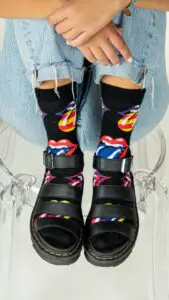
Custom Orthotics: In some cases, custom orthotics might be the solution. These are specially made insoles tailored to your foot shape and needs. They can not only address tongue slippage but also provide overall comfort and support.
Bob, who adored his shoes despite their misbehaving tongues, decided to take them to a cobbler. With a small Velcro strip added to the tongue, his shoes became his trusted companions once again.
Tips for Preventing Tongue Slippage
While finding solutions to tongue slippage is essential, prevention is often the best medicine. Here are some tips to help you keep that tongue in line from the start:
1. Proper Shoe Selection
Choose shoes that are designed for your specific activity. Running shoes for running, hiking boots for hiking, and so on. These shoes are crafted with features that minimize tongue slippage.
Maria, the dedicated hiker, upgraded to hiking boots specifically designed for rugged terrains. These boots had a tongue design that effectively prevented slippage during her hikes.
2. Regular Shoe Maintenance
Don’t neglect your shoes’ maintenance. Check them regularly for wear and tear, especially the tongue. If you notice any signs of deterioration or slippage, it might be time to consider replacement or repairs.
Mike, the leisurely walker, realized that his old sneakers had seen better days. He invested in a new pair of walking shoes with a tongue that stayed in place, ensuring comfortable walks.
3. Ensuring a Proper Fit
Always get your feet measured when buying new shoes, and don’t rely solely on “your size.” Shoe sizing can vary between brands and styles. A proper fit is crucial in preventing tongue slippage.
Alex, the tennis player with wide feet, started buying tennis shoes from a brand known for its wider options. This ensured a better fit and reduced the chances of tongue slippage during matches.
4. Monitoring Foot Health
Pay attention to any discomfort or issues you’re experiencing while wearing your shoes. Addressing them early can prevent more significant problems down the road and enhance your overall foot health.

Samantha, the nurse, started using specialized insoles designed for healthcare professionals. These insoles provided the support and comfort she needed during long shifts, reducing the risk of foot-related issues.
Case Studies and User Experiences
To make all of this practical, let’s hear from some real folks who’ve battled tongue slippage and emerged victorious. Their stories might just have the solution you’ve been searching for.
Jeny’s Journey to Comfort:
Jenny, an avid hiker, used to struggle with her hiking boots’ tongues sliding during treks. She tried various lacing techniques but found that the “window lacing” method worked like magic. By creating small loops near the tongue and threading the laces through them, she effectively secured the tongue in place. Now, she hikes for miles without a hint of discomfort.
Bob’s Cobbler Triumph:
Bob had a pair of shoes he absolutely adored, but the tongue just wouldn’t behave. Frustrated, he decided to seek professional help and visited his local cobbler. The experienced cobbler added a small Velcro strip to the tongue’s underside, allowing it to stay put during his daily walks. Bob now swears by the cobbler’s touch and continues to enjoy the company of his beloved shoes.
Conclusion
There you have it – the mystery of the wandering shoe tongue, unraveled and demystified! Although it may seem like a minor issue, tongue slippage can have a significant impact on your comfort, performance, and foot health. So, don’t let that tongue slide and disrupt your activities. Utilize the tips, tricks, and solutions we’ve explored to keep it in check.
Now, lace up those shoes with confidence, and go conquer the world – tongue troubles, be gone! Whether you’re a runner, hiker, dancer, or simply someone who loves comfortable footwear, the knowledge you’ve gained here will help you stride through life with ease and comfort.
Remember, your shoes are your trusty companions on life’s journey. Treat them well, and they’ll support you every step of the way. Happy walking, running, dancing, or whatever adventure lies ahead!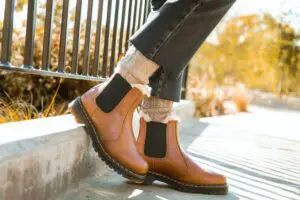
If you have any more questions or need further advice, feel free to explore additional resources or seek guidance from experts. Your feet will thank you, and you’ll continue to enjoy your favorite activities without the hassle of tongue slippage.

